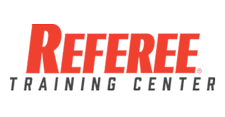By David Westol
The irony is inescapable. A group of men and women who officiate sports — who live by rules, policies, regulations, requirements, mechanics, “If in doubt” language … form an association and subsequently ignore, work around or simply violate the very rules — the bylaws — of their association that they have agreed to follow.
And violations often occur because, “We don’t have time to do it right,” or “We’ve stalled long enough on this,” or “We can’t get done what we want to get done.”
First, last and always: Associations run into problems when bylaws are ignored. The metaphor is simple: Would you be well-received if you walked onto a football field wearing a shirt with horizontal stripes and a New York Mets cap? If the opening kickoff was from the 17 yardline? If the game clock stopped after every play?
The rules are in place for good reasons. So are your bylaws. Better to follow the bylaws until you can change, modify or update rather than to risk a variety of issues by freelancing your way around the rules that your board and/or association agreed to follow.
Here are six things you can do to improve your bylaws:
1. You do not need “everything” in your bylaws.
Many practices and procedures can be written into a policy document. That allows you to change policies quickly and through a board of directors vote as opposed to a vote of the membership. Examples: Specific duties assigned to committees or an officer description that changes each year in practice when a new person assumes the office. There are things that should remain in the bylaws such as the election procedure and the number of board meetings.
2. Group or organize the association bylaws into a logical sequence.
Far too many associations allow the bylaws to become a fur ball of conflicting policies and rules. The general order includes the purpose of the association, the definition of membership, the board of directors and duties, election procedure, committees, fiscal matters, amending the bylaws and other matters.
3. Be certain that a procedure is in place for the removal of officers and filling vacancies on the board.
In terms of contentious and time-consuming issues for association boards, those two will often rank number-one and number-two.
4. Make your bylaws workable.
If the bylaws call for monthly meetings of the board but you find yourselves skipping two or three meetings each year, then it is a good time to introduce Captain Bylaws to Captain Reality … and Captain Reality has the choice on the coin toss.
5. Update your bylaws.
State laws affecting non-profits may change each year. And remember that the IRS is playing hard ball with the Form 990 filing each year. Get ‘er done and invest the money to have a competent and experienced attorney — not a volunteer — do the work.
6. Cover the topics that impact your group.
What issues have arisen in the past four years that caused your board and association of officials to say, “Uh, er, we’re not sure”? Can your association do what it is intended to do within the authority of your association’s bylaws? If not, now is an excellent time for “Further Review.”
As with the sports that we officiate, things are not becoming simpler in the world of non-profit and association governance. Invest the time to make certain the bylaws are up to date and working. And understand and follow those rules.
Dave Westol, an NASO member, is a longtime football official. He is principal and owner of Limberlost Consulting Inc., in Carmel, Ind. Westol consults with a number of national fraternities and sororities and other non-profit associations. His website is limberlostconsulting.com.





